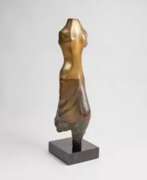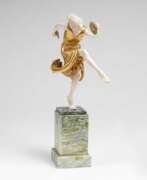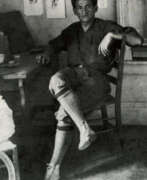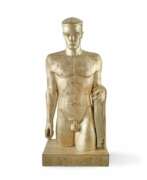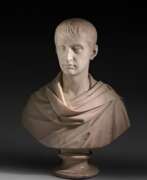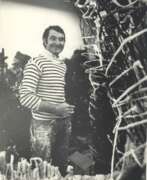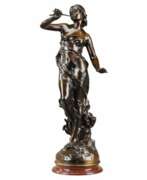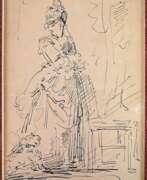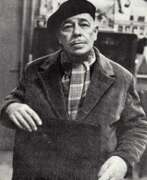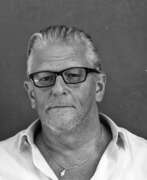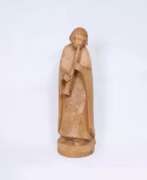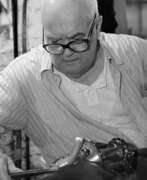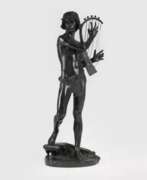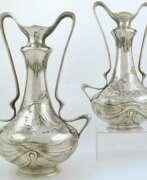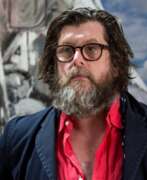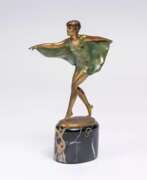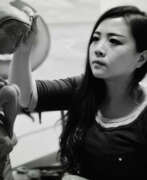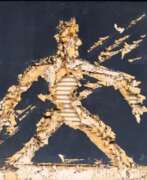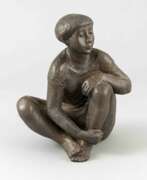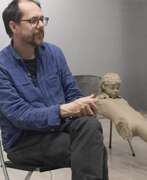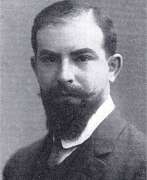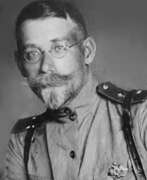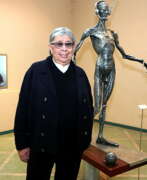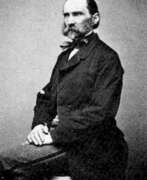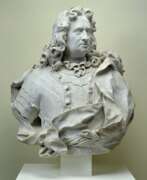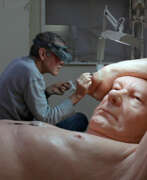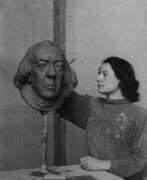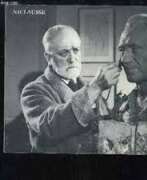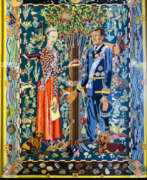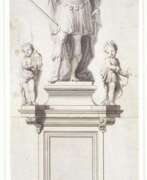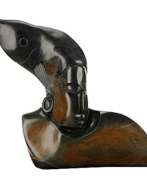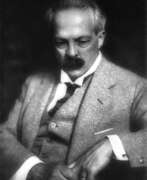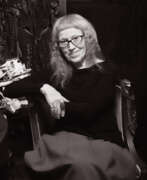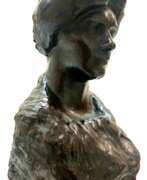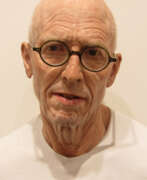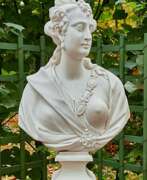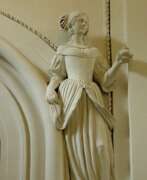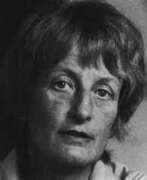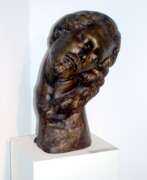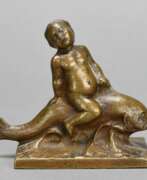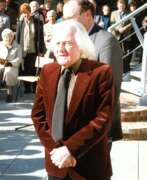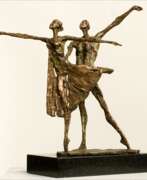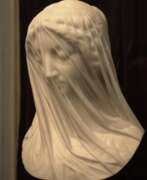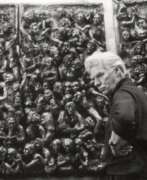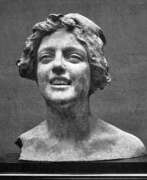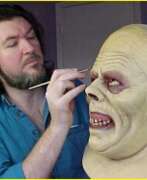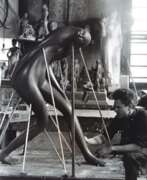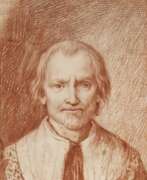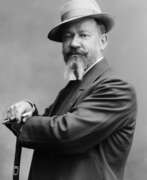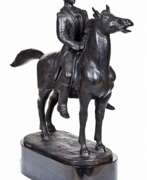Portraitist Portrait sculpture
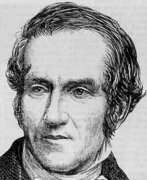

Hezekiah Augur was an American sculptor and inventor. He was self-taught and, unlike many other American sculptors of the 19th century, spent his entire career in New Haven.
Hezekiah Augur was the son of a carpenter and learned the woodcarving trade early on. He later invented a lace loom and a machine for carving piano legs. He then switched to marble.
Hezekiah Augur was a member of the Connecticut Academy of Arts and Sciences.
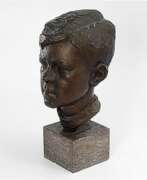

Kurt Bohn was a talented German painter, sculptor, designer and writer. Born into a creative family, he learnt the basics under the guidance of his father, Oskar Bohn. His perseverance and pursuit of artistic excellence led him to Berlin, where he became a pupil of Fritz Klimsch between 1931 and 1935. Under his guidance, Kurt Bohn honed his skills and broadened his artistic horizons.
By 1938, Kurt Bohn had established his own studio in Berlin, signalling his growing independence and the development of his artistic vision. World War II forced Kurt Bohn to move to Ulm in 1945, where he lived until his death.
Kurt Bohn's work has left an indelible mark on the art world, demonstrating his versatility and dedication to art.


Matteo Bottiglieri was an Italian sculptor and painter from Naples. One of his first works is a marble "Dead Christ" (1724), in the crypt of the Capua Cathedral, perhaps executed after drawings by Francesco Solimena. In 1733 he executed three works for the Church of the Crucifix in Salerno, and in the same year he took part in the decoration of San Giuseppe dei Ruffi in Naples. He also executed numerous drawings portraying shepherds, later used as models for figures in Nativity scenes. Also attributed to him is a group of "Christ and the Samaritan" in the cloister of San Gregorio Armeno, as well as the sepulchre of Alessandro Vicentini in the right transept of the church of San Domenico Maggiore.
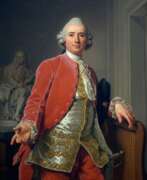

Jean-Jacques Caffieri was an 18th-century French sculptor. He is known as a brilliant representative of academism. Caffieri was famous for his marble images of figures of science and culture, sculptures on biblical and mythological themes. In particular, he made a series of busts and sculptures of artists, composers and playwrights for the Comédie Française theater.
Jean-Jacques Caffieri was the most famous, but by no means the only representative of the family dynasty of hereditary artists - the largest in France. In addition to him, his grandfather Philippe Caffieri, his father Jacques Caffieri, as well as his uncle and three brothers made significant contributions to French art.
Caffieri was made an honorary member of the Royal Academy of Arts, was appointed to the prestigious post of court sculptor to King Louis XV, became a professor at the Royal Academy of Arts and held that position for almost 20 years. His works today adorn the collections of major French museums.


Antoine Laurent Dantan the Elder was French academic sculptor; elder brother of the cartoonist Jean-Pierre Dantan.
After being awarded a major prize at the Academy of Arts in Paris in 1828 for his statue of the 'Dying Hercules', Antoine Laurent Dantan studied for several years in Rome and upon his return made a name for himself with many statues and portrait busts.
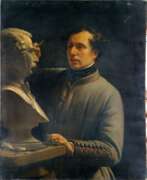

Jean-Pierre Dantan the Younger was a French caricaturist sculptor; younger brother of the academic sculptor Antoine Dantan. He studied at the Paris Academy of Arts and under François Joseph Bosio. His specialty was portrait busts, in which he conveyed the external features and character of his models with amazing fidelity.
Jean-Pierre Dantantant showed a rare ability in his work to notice the comic features of their faces and reproduce them with equanimity and a sense of proportion without offending the self-esteem of the originals who posed before him.
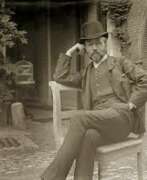

Jacques de Lalaing was an Anglo-Belgian painter and sculptor, specializing in animals. Lalaing was raised in England until 1875, when he moved to Brussels. He trained as an artist under Jean-François Portaels and Louis Gallait at the Académie Royale des Beaux-Arts in Brussels. With the encouragement of Thomas Vinçotte and Jef Lambeaux, Lalaing began to sculpt in 1884. As a painter he continued to work in a realistic, naturalistic style, as a portrait painter and producing historical scenes. As a sculptor he produced allegorical bronzes and memorial art. Along with his fellow animalier sculptors Léon Mignon and Antoine-Félix Bouré Lalaing established a distinctively Belgian tradition of animal art, to which the flourishing Antwerp Zoo contributed inspiration. In 1896 Lalaing became a member of the Royal Academy where he had studied, and from 1904 through 1913 he served as its director. His works are represented in the collections of museums in Antwerp, Bruges, Brussels, Ghent and Tournai.
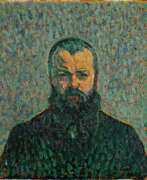

Auguste de Niederhäusern, better known as Rodo, was a Swiss sculptor and medallist. He is considered one of the most influential representatives of Swiss Symbolism.
In 1892 Rodo took part in the Salon de la Rose-Croix exhibition and for the next six years was a collaborator of Auguste Rodin.
Between 1900 and 1902, Rodot created several works for the Federal Palace in Bern, which was under construction: at the top of the pediment is a sculptural group symbolising political independence, executive and legislative power; he also created the capstones on the arched windows of the south façade.
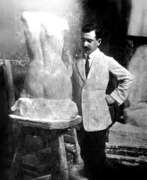

Ángel María de Rosa was an Argentine sculptor and philanthropist.
As a teenager he entered the Society for the Encouragement of Fine Arts in Buenos Aires, and then transferred to the Bon Marché Academy of Art. He then travelled to Italy, where he studied at the Florence Academy and at the Institute of Fine Arts in Rome.
In 1943, he donated most of his own works, as well as much of the art that Ángel María de Rosa had collected in Europe, to his hometown, which led to the creation of the Municipal Museum of Fine Arts of Junín.


Heinrich Faltermeier was a German sculptor. After an apprenticeship as a goldsmith and years of travel, including to Spain, Faltermeier studied from 1936 to 1943 at the Academy of Fine Arts in Munich. He worked in accordance with the Nazi concept of art and created war memorials. From 1938 to 1944, with the exception of 1941, he was represented at all major German art exhibitions. Faltermeier's preferred working materials as a sculptor were bronze, marble and wood.


Rainer Fetting is a German painter and sculptor.
Rainer Fetting was one of the co-founders and main protagonists of the Galerie am Moritzplatz in Berlin, founded in the late 1970s by a group of young artists (mainly painters) from the class of Karl Horst Hödicke at the former Berliner Hochschule für Bildende Künste (Berlin Art Academy, today known as Universität der Künste). Fetting is now one of the internationally best known contemporary German artists, having created a large oeuvre of expressive figurative paintings covering many different kinds of subject-matter, as well as many bronze sculptures.
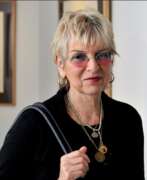

Audrey L. Flack is an American artist. Her work pioneered the art genre of photorealism and encompasses painting, sculpture, and photography. Flack's early work in the 1950s was abstract expressionist. But gradually, Flack became a New Realist and then evolved into photorealism during the 1960s. Audrey Flack is best known for her photo-realist paintings and was one of the first artists to use photographs as the basis for painting.[6] The genre, taking its cues from Pop Art, incorporates depictions of the real and the regular, from advertisements to cars to cosmetics. Flack's work brings in everyday household items like tubes of lipstick, perfume bottles, Hispanic Madonnas, and fruit.[6] These inanimate objects often disturb or crowd the pictorial space, which are often composed as table-top still lives. Flack often brings in actual accounts of history into her photorealist paintings, such as World War II' (Vanitas) and Kennedy Motorcade. Women were frequently the subject of her photo-realist paintings. She was the first photorealist painter to be added to the collection of the Museum of Modern Art in 1966.


Fritz Fleer is a German painter and sculptor. He studied at the Hamburg University of Fine Arts in the class of Edwin Paul Scharf.
As independent artist, Fritz Fleer has been creating works for urban planning since the 1950s; in Hamburg he was commissioned for 17 sculptures by the municipal housing company SAGA.
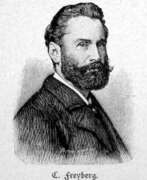

Conrad Freyberg was a German artist of the second half of the nineteenth and early twentieth centuries. He is known as a painter and sculptor.
Freyberg specialized in equestrian portraits and group portraits of horsemen, combining realistic likeness with delicate rendering. Inspired by the wars of 1866 and 1870-1871, the artist created battle paintings, including The Battle of Sadov and The Battle of Skalica. He later became a portrait painter and also worked in the genres of historical painting, animalistic painting and sports scenes. For his achievements, he received the title of court painter. The master was one of the creators of the bronze monument to Prince Albrecht of Prussia in Berlin's Charlottenburg district in 1901.
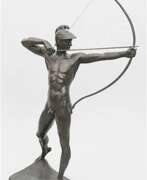

Ernst Moritz Geyger was a German artist known for his work in sculpture, painting and engraving. His work is included in the collections of the Los Angeles County Museum of Art, the Carnegie Museum of Art and the Fine Arts Museums of San Francisco.
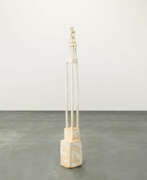

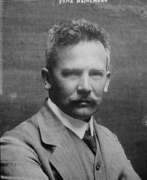

Fritz Heinemann was a German sculptor. Heinemann belonged to those artists who set themselves apart from the prevailing New Baroque of the time by Reinhold Begas and his students with a tectonic formal language in the sense of Adolf von Hildebrand. Some figures are close to the works of Auguste Rodin. His work covers almost the entire sculptural spectrum: monuments, gravestones, genre figures, busts and small bronzes.
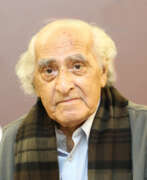

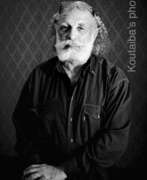

Nida Kadhim is an Iraqi sculptor, noted for producing a number of monumental works for Baghdad's city centre, some of which are still standing, while others were demolished or looted following the 2003 Iraqi invasion. Kadhim received his formal art education at Baghdad's Academy of Fine Arts in the 1950s. Actively involved in the Iraqi arts community, he became a founding member of the art group known as Al-Mujadidin (The Innovationists). His sculptures focus on grandiose busts and statues of leading figures taken from Iraq's history, or are based on other themes the artist considers worthy. His most well-known sculpture, which is still standing, is the Arab Woman in Zawra Park, Baghdad. It depicts an Arab woman holding a bouquet of flowers out to the new generation of Iraqis who are seeking a better future.


Francesco Ladatte was an Italian sculptor. At birth, his surname was somewhat different - Ladetti. The name Ladatte was the result of "Frenchization" after Francesco moved from Italy to Paris. He is sometimes referred to as François Ladatte.


Franz Xaver Messerschmidt was an 18th-century Austrian sculptor. He is known as a master of the grotesque and caricature. Messerschmidt became famous after his death. During his lifetime his contemporaries considered him at best an extravagant freak, and at worst mentally ill, although no documentary evidence of the sculptor's mental illnesses has yet been found.
Franz Xaver Messerschmidt was an adherent of Classicism at the initial stage of his work. But then the artist decisively abandoned the principles of classical art. He became famous for making a large series of busts, which the sculptor himself called "heads". The faces of the characters in these works are distorted by all kinds of grimaces and display vivid human emotions. All in all Messerschmidt managed to produce more than 50 heads, which during his lifetime did not arouse the interest of potential customers.
In January 2005, the Louvre acquired one of the "heads" at an auction Sotheby's for a record price of 4 800 000 U.S. dollars.


Gustave Miklos was a sculptor, painter, illustrator and designer of Hungarian origin. An influential sculptor involved with Cubism and early developments in Art Deco, Miklos exhibited at the Salon d'Automne and the Salon des Indépendants during the 1910s and 1920s, and in 1925 showed at the International Exposition of Modern Industrial and Decorative Arts; the exhibition from which the term "Art Deco" was derived. He became a naturalized French citizen in 1922, and a member of The French Union of Modern Artists (UAM) in 1930. In addition to his painting and sculptural works, Miklos illustrated over thirty books, designed close to 200 bookbindings, numerous posters, in addition to furniture designs.


Georges Morin was a German painter, sculptor, and medalist, showcased his versatility through architecture sculptures, standalone artworks, medals, statues, and figures.
Morin studied at the Berlin Art Academy from 1892 to 1896, learning under Ernst Herter and Peter Breuer. Following his successful exams, he journeyed to Paris for further studies, captivated by oriental dancers of Commedia dell'arte. Morin painted and sculpted these dancers, drawing inspiration from their performances. He also traveled to Italy and England before returning to Berlin, residing on Görrestraße 16 in Berlin-Friedenau. He was surrounded by fellow artists in the vicinity. Morin's affiliations included the District Art Deputation and associations of visual artists in Berlin and Germany, providing him platforms to exhibit his creations.
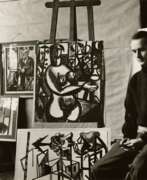

Hermann Naumann, a distinguished German artist, has made significant contributions to the fields of painting, graphics, illustration, and sculpture. Starting his artistic journey with a stonemasonry apprenticeship, Hermann Naumann later honed his skills in sculpture under the guidance of Burkhart Ebe and Herbert Volwahsen at the HBK Dresden. Over time, he expanded his artistic repertoire to include painting and graphic arts, embracing techniques like lithography, etching, and punch cutting.
Hermann Naumann's works are celebrated for their depth and versatility, reflecting his mastery over various mediums. Notably, his illustrations for literary works, such as Heinrich Böll's "Erzählungen" and Franz Kafka's "Betrachtung," showcase his exceptional ability to complement and elevate textual narratives through visual art. His public sculptures, like the relief in Dresden and the "Fahnenschwinger" in Riesa, further attest to his prowess in creating engaging and meaningful art.
For art collectors and enthusiasts, Hermann Naumann's oeuvre offers a rich tapestry of visual narratives, each piece echoing the artist's profound engagement with his subjects and mediums. Those interested in exploring Hermann Naumann's artistic journey and his contributions to German art and culture are encouraged to stay updated on exhibitions, sales, and auctions featuring his work.
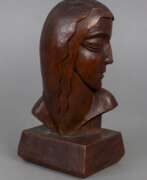

Karl Opfermann, a German sculptor and graphic artist born in 1891 in Rødding (now Denmark), carved a niche for himself in the realms of art and culture. His initial training as an ornament creator led him to the influential circles of Hamburg and Berlin, where he honed his artistic skills under the guidance of Heinz Wedding, Fritz Heit, and Richard Luksch. Opfermann's artistic journey was deeply intertwined with notable groups like the "Hamburgische Sezession" and the "Novembergruppe" in Berlin, where he played a pivotal role in shaping the local sculptural landscape from 1919 to 1933.
Tragically, Karl Opfermann's works became a target during the "Entartete Kunst" (Degenerate Art) action in 1937 by the Nazis, leading to their removal and destruction from German museums. A significant portion of his oeuvre was further lost in a bombing in 1943, which destroyed his studio in Hamburg. Despite these challenges, Opfermann's legacy persists, with efforts to reconstruct his life and works focusing on the years before 1943, the period before the destruction wrought by the Nazis and World War II.
Karl Opfermann's artistic expression was rooted in German Expressionism, a movement born out of resistance and reaction, emphasizing emotion and individual experience. His works, spanning various mediums including wood, stone, and ceramics, reflect a profound emotional depth and a unique exploration of human form and expression.
For collectors and experts in art and antiques, Karl Opfermann's work offers a compelling glimpse into the turbulent yet artistically rich period of early 20th-century Germany. His sculptures and graphic art, held in various collections throughout Germany, including Hamburg and Flensburg, stand as a testament to his enduring impact on German Expressionism.
To delve deeper into the world of Karl Opfermann and stay informed about new sales or auction events related to his work, consider signing up for updates. This subscription is an opportunity to explore and appreciate the profound legacy of this influential artist.


lias Robert, real name Louis-Valentin Robert, was a 19th-century French sculptor.
Elias Robert studied at the École des Beaux-Arts in Paris, and was a pupil of David d'Angers and James Pradier. He made his debut at the Salon of 1845 and won the gold medal in 1847.
He is best known for his Neoclassical works, which showcased his talent for figurative sculpture and marble work. His elegant and graceful sculptures often reflected mythological and historical subjects, contributing to the artistic rise of his time.
He was awarded the title of Chevalier of the Legion of Honour.


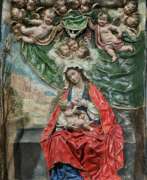

Luisa Ignacia Roldán Villavicencio, known as La Roldana, was a Spanish sculptress of the Baroque period and the first female sculptor in Spain about whom there is verified lore. In the Museum of the Latin American Society, Roldán is described as "one of the few female artists who had their own workshop outside the convent in Golden Age Spain". Her father Pedro Roldán was also a sculptor from Seville.


